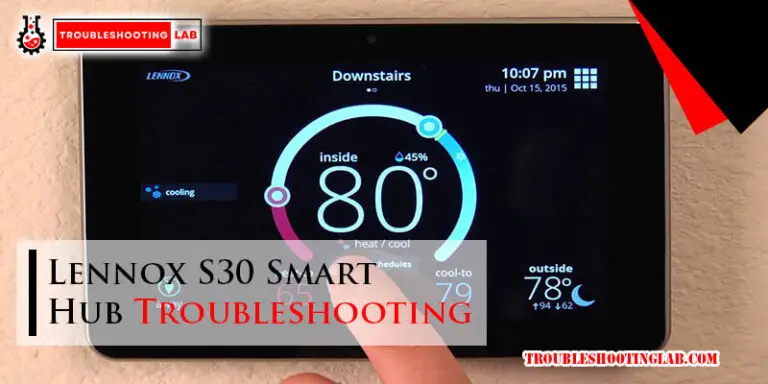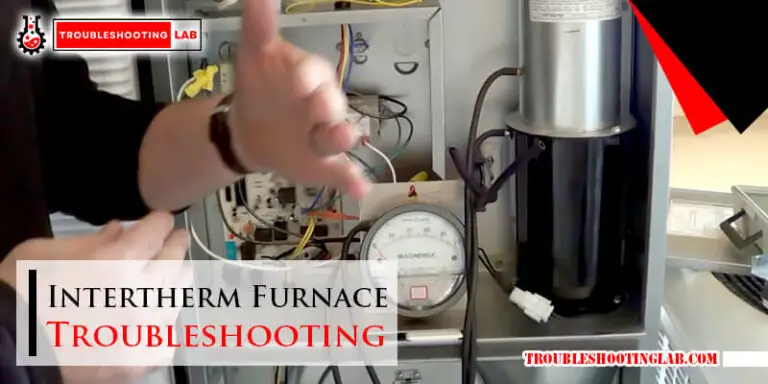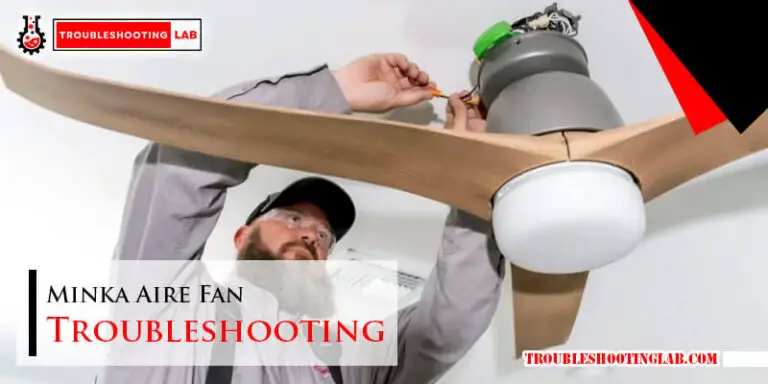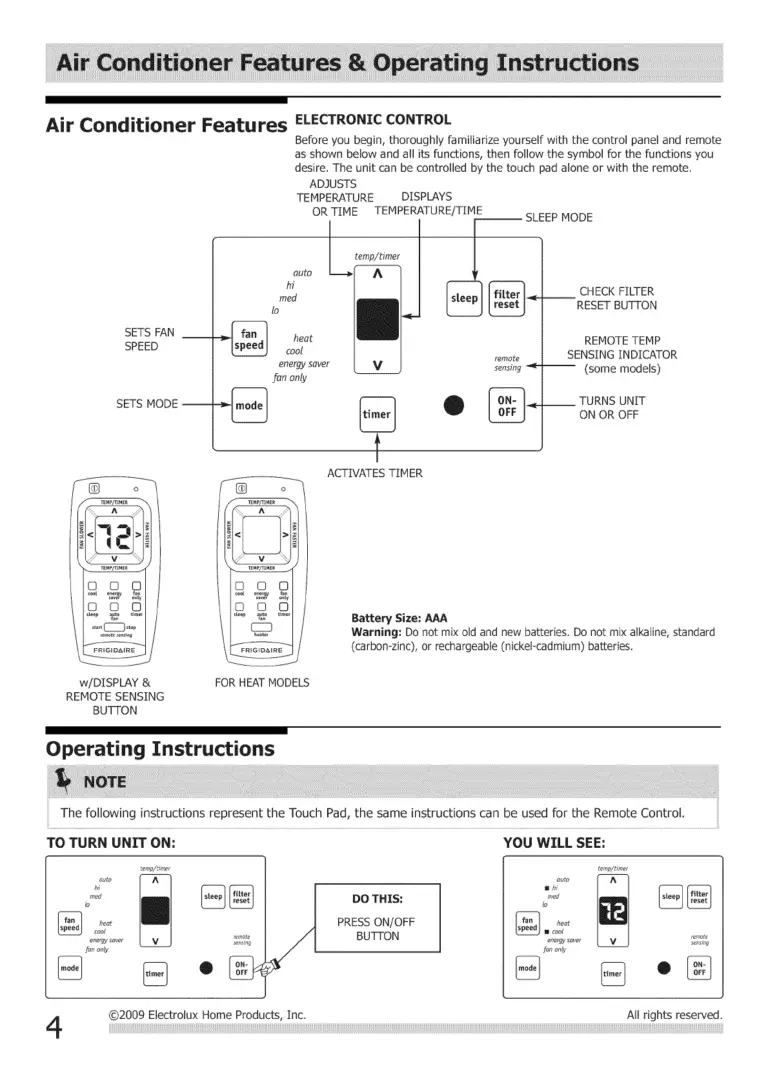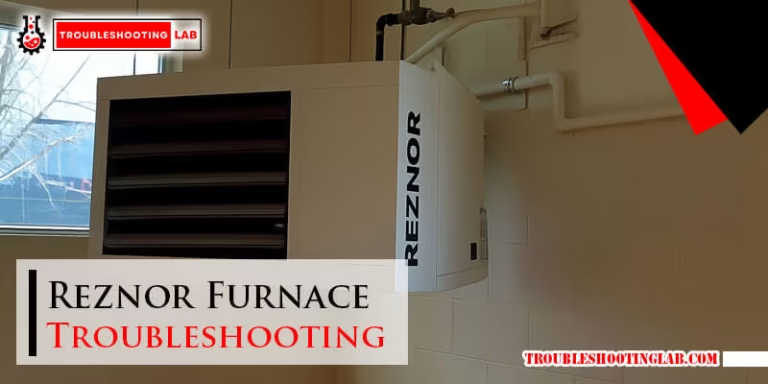Hisense Window Air Conditioner Troubleshooting: Quick Fixes
Is your Hisense window air conditioner acting up just when you need it the most? Don’t worry—you’re not alone.
Whether it’s failing to cool your room, making strange noises, or just refusing to turn on, these issues can be frustrating, especially during a heatwave. The good news? Many of these problems have simple solutions you can handle on your own, without calling in a professional.
In this guide, we’ll walk you through easy troubleshooting steps to get your air conditioner back on track and keep your home comfortable. Stick around—you might be surprised by how quickly you can fix the issue!

Credit: www.scribd.com
Common Issues With Hisense Air Conditioners
Hisense window air conditioners are reliable appliances, but like any machine, they can encounter issues over time. Knowing the common problems and how to address them can save you time, money, and frustration. Let’s dive into some typical challenges you might face and how to troubleshoot them effectively.
Unit Not Turning On
Is your Hisense air conditioner refusing to start? First, check the power source. Ensure the unit is plugged in securely, and the outlet is functioning by testing it with another device.
If the outlet is fine, inspect the circuit breaker. A tripped breaker is often the culprit. Reset it and see if the unit powers up. Still no luck? The issue might be the remote control’s batteries or the air conditioner’s internal fuse, which may need replacing.
Insufficient Cooling Performance
Does the air in your room feel warmer than it should? Start by examining the air filter. A dirty filter can block airflow, reducing cooling efficiency. Clean or replace it if necessary.
Also, check the thermostat settings. Make sure the temperature is set lower than the current room temperature. If the problem persists, the refrigerant levels might be low, and you’ll need professional help to recharge it.
Unusual Noises During Operation
Strange sounds can be alarming. A rattling noise might indicate loose screws or parts. Tighten any visible screws and ensure the unit is securely mounted in the window.
If you hear a buzzing or humming, it could be an issue with the fan motor or compressor. Turn off the unit and inspect for any visible obstructions. For persistent noises, contacting a technician is your safest bet.
Water Leaks Or Dripping
Is water pooling under your air conditioner? This could be due to a clogged drain hole. Unplug the unit and carefully clear the drain with a small brush or wire.
Another common cause is improper installation. Ensure the unit is tilted slightly backward to allow water to drain outside. If you notice excessive water leakage, it could signal a refrigerant issue, which requires expert attention.
Have you encountered any of these problems before? Addressing them promptly can extend the life of your Hisense air conditioner and keep your home cool and comfortable. Don’t ignore small issues—they can quickly escalate into costly repairs!
Basic Maintenance Tips
Regular maintenance ensures your Hisense window air conditioner works efficiently. It also extends its lifespan. Neglecting upkeep can cause performance issues and reduce cooling effectiveness. Follow these simple maintenance tips to keep your unit running smoothly.
Cleaning The Air Filters
Dirty air filters can block airflow and reduce cooling power. Remove the filters and wash them with warm water and mild soap. Let them dry completely before placing them back into the unit. Clean the filters every two weeks during heavy use to maintain efficiency.
Inspecting The Vents And Coils
Dust and debris can collect on vents and coils over time. This buildup can interfere with cooling. Use a soft brush or vacuum to gently clean the vents. For coils, use a coil cleaner spray designed for air conditioners. Inspect them monthly to prevent dirt accumulation.
Checking For Blockages
Blockages in the drainage system can lead to leaks and poor performance. Look for obstructions near the drain pan and drain pipe. Clear any dirt or debris you find. Ensure the drain pipe is not kinked or clogged. This step helps prevent water damage and ensures smooth operation.
Quick Fixes For Power Problems
If your Hisense window air conditioner won’t turn on, don’t panic. Power issues are common and often easy to fix without calling a professional. Let’s dive into some quick troubleshooting steps to get your unit up and running again.
Resetting The Unit
Sometimes, all your air conditioner needs is a quick reset. Locate the reset button on the plug of your unit—it’s usually red or labeled clearly. Press and hold it for five seconds, then release it. Wait a moment and try turning the unit back on.
If this works, you’re good to go! However, if the unit still doesn’t power up, don’t stop here. There are a few more checks to consider.
Inspecting The Power Cord And Outlet
Start by checking the power cord for visible damage like cuts, fraying, or discoloration. A damaged cord may prevent your unit from receiving power. If you spot any issues, stop using the unit and replace the cord immediately.
Next, test the outlet by plugging in a lamp or another small device. If the device doesn’t turn on, the outlet might be the problem. Try another outlet to confirm whether the issue lies with the air conditioner or your home’s wiring.
Testing The Circuit Breaker
Air conditioners can trip a circuit breaker, especially if they’re on the same circuit as other high-power devices. Head to your breaker box and check if the switch for the air conditioner’s circuit is in the “off” position or halfway between “on” and “off.”
If it’s tripped, flip it fully to “off” and then back to “on.” Now, attempt to power on your unit. If the breaker trips again, your circuit may be overloaded or there could be a more complex electrical issue to address.
These quick fixes often solve power problems without much hassle. Which step worked for you? If you’re still stuck, it might be time to consult a professional or reach out to Hisense customer support for guidance.
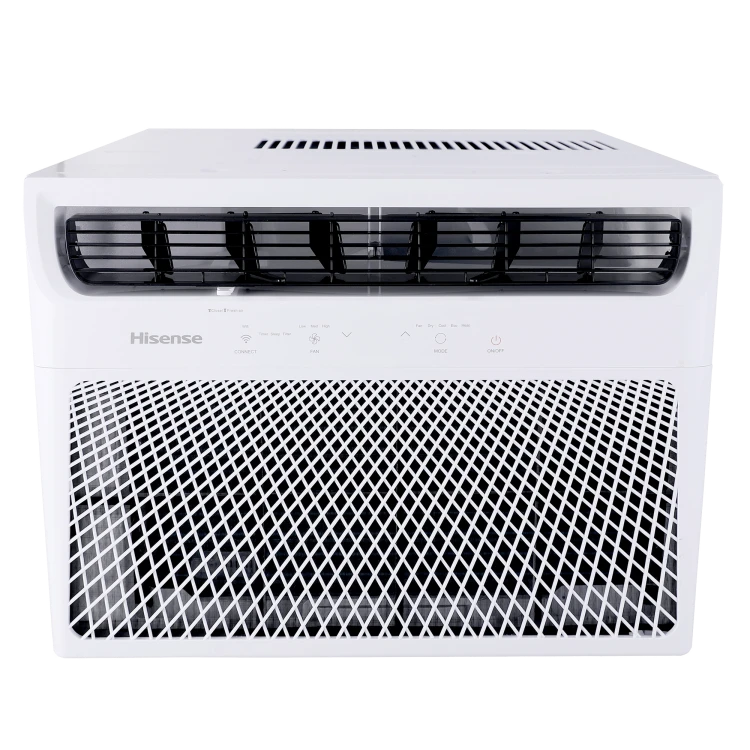
Credit: www.hisense-usa.com
Addressing Cooling Issues
If your Hisense window air conditioner isn’t cooling as expected, don’t panic just yet. Cooling issues are common and often easy to fix with a bit of troubleshooting. Let’s dive into practical solutions to get your unit working efficiently again.
Adjusting The Thermostat Settings
Start by checking the thermostat. Is it set to your desired temperature? If your room still feels warm, lower the thermostat a few degrees and wait for the unit to respond.
Ensure the air conditioner is set to “Cool” mode, not “Fan” or “Dry.” These modes can confuse you into thinking the unit isn’t cooling. If the display isn’t clear, refer to your manual for guidance on settings.
Sometimes, the thermostat sensor might shift out of position, causing inaccurate readings. Make sure it’s securely fixed in place near the evaporator coil.
Ensuring Proper Airflow
Blocked airflow can severely impact cooling. Check the air filter for dust or debris buildup. A dirty filter limits air circulation and forces the unit to work harder, reducing its efficiency.
Clean the filter using water and mild soap. Let it dry completely before reinserting it. This small step can make a big difference in cooling performance.
Also, inspect the vents and louvers. Are they open and angled to direct cool air into the room? Obstructions like furniture or curtains can block airflow, so keep the area around the unit clear.
Refilling Refrigerant Levels
Low refrigerant levels can cause your air conditioner to struggle with cooling. If you notice weak airflow or warm air coming from the vents, this might be the culprit.
Unfortunately, refilling refrigerant isn’t a DIY task. You’ll need to contact a certified HVAC technician to handle it safely and properly. They can also check for leaks in the system, which might have caused the refrigerant to drop in the first place.
Don’t ignore this issue. Running the unit with low refrigerant can lead to expensive damage over time.
Which of these fixes worked for you? Troubleshooting may feel tedious, but these small adjustments can save you both time and money.
Fixing Noise-related Problems
Noisy air conditioners can be incredibly frustrating, especially when you’re trying to relax or focus. If your Hisense window air conditioner is making strange sounds, don’t worry—you can fix most of these issues with a little effort. Let’s dive into common noise-related problems and how to tackle them step by step.
Tightening Loose Components
Loose screws or panels can cause rattling noises that sound worse over time. Start by unplugging your air conditioner for safety. Check the exterior casing and tighten any loose screws using a screwdriver.
Inspect the fan blades inside. If they seem wobbly or uneven, gently adjust them. A simple tightening can often eliminate persistent rattling noises.
Have you ever ignored a loose screw, thinking it wasn’t a big deal? That small oversight might be the cause of all the noise. Spend a few minutes tightening components—it’s worth it!
Checking For Foreign Objects
Sometimes, debris like twigs or dirt sneaks into the unit, causing clunking or grinding sounds. Carefully remove the air conditioner from the window and open the front panel. Look for any foreign objects inside.
If you spot something, remove it with your hands or a soft brush. Double-check the fan area and surrounding components for hidden debris.
Think about this: Could a stray leaf or small object from outside be the culprit behind the noise? It’s surprising how often this happens, so don’t skip this step!
Replacing Worn-out Parts
Over time, parts like fan belts or motor bearings may wear out and create loud humming or grinding noises. If tightening and cleaning didn’t work, inspect these components closely. Look for visible wear, cracks, or frayed edges.
If you notice damage, it’s time to replace the part. You can often find replacement parts online or at hardware stores. Follow the manufacturer’s instructions for installation to avoid further issues.
Ask yourself: How long has it been since your unit’s parts were replaced? Regular maintenance can prevent major noise problems and extend the life of your air conditioner.
Tackling noise issues isn’t just about comfort—it’s about ensuring your air conditioner works efficiently. By tightening loose components, clearing foreign objects, and replacing worn-out parts, you can enjoy a quieter and cooler home.
Resolving Water Leakage
Water leakage from your Hisense window air conditioner can be frustrating. It may lead to damage in your home and affect the unit’s performance. Understanding the common causes and applying simple fixes can help resolve this issue. Below are practical steps to stop water leakage and keep your AC working efficiently.
Inspecting The Drainage System
Start by checking the drainage system of your air conditioner. Ensure the drain pan is not cracked or damaged. A damaged pan can allow water to leak instead of collecting it. Look for signs of rust or wear that might cause leaks. Verify the drain hole is not blocked, as this can stop proper water flow. Cleaning the pan regularly helps prevent debris buildup.
Clearing Clogged Drain Lines
Clogged drain lines are a common cause of water leakage. Dirt or mold can block the line, stopping water from draining out. Use a pipe cleaner or a small brush to clear the blockage. Flush the drain line with a mixture of water and mild detergent. This ensures any remaining debris is removed. Cleaning the lines every few months helps prevent future clogs.
Positioning The Unit Correctly
The position of your air conditioner affects how water drains. Check if the unit is tilted slightly backward. This allows water to flow toward the drainage system. If it leans forward, water may spill inside your home. Adjust the unit’s position using a level tool to ensure proper tilt. Secure the AC tightly to avoid movement during operation.
When To Seek Professional Help
When your Hisense window air conditioner starts acting up, it can be frustrating trying to pinpoint the issue. While some problems can be solved with DIY fixes, others require professional intervention. Knowing when to call for help can save you money and prevent further damage.
Identifying Major Component Failures
If your air conditioner is making unusual noises like grinding, screeching, or rattling, it could indicate a problem with the compressor or fan motor. These components are essential for the unit’s operation and often require specialized tools to repair.
Think about the cost-benefit here. Are you ready to risk damaging a major component further, or is it time to let the experts step in?
Dealing With Persistent Issues
Sometimes, minor issues like inconsistent cooling or strange smells can be fixed by cleaning the unit or replacing the filter. But what happens when these problems keep coming back?
Persistent issues often indicate something deeper. For example, recurring bad odors might point to mold inside the system, while constant cooling problems could signal electrical faults or sensor malfunctions. These are not just annoying—they can impact your air quality and energy bills.
If you’ve tried all the recommended maintenance steps and the problem persists, it’s a clear sign that professional help is needed.
Understanding Warranty Coverage
Before you hire a technician, check your warranty documents. Many Hisense window air conditioners come with warranties that cover specific repairs or replacements, especially for major components.
Calling a professional within the warranty period could save you from paying out of pocket. However, make sure you use authorized service providers to avoid voiding your warranty. Unauthorized repairs can sometimes make the situation worse.
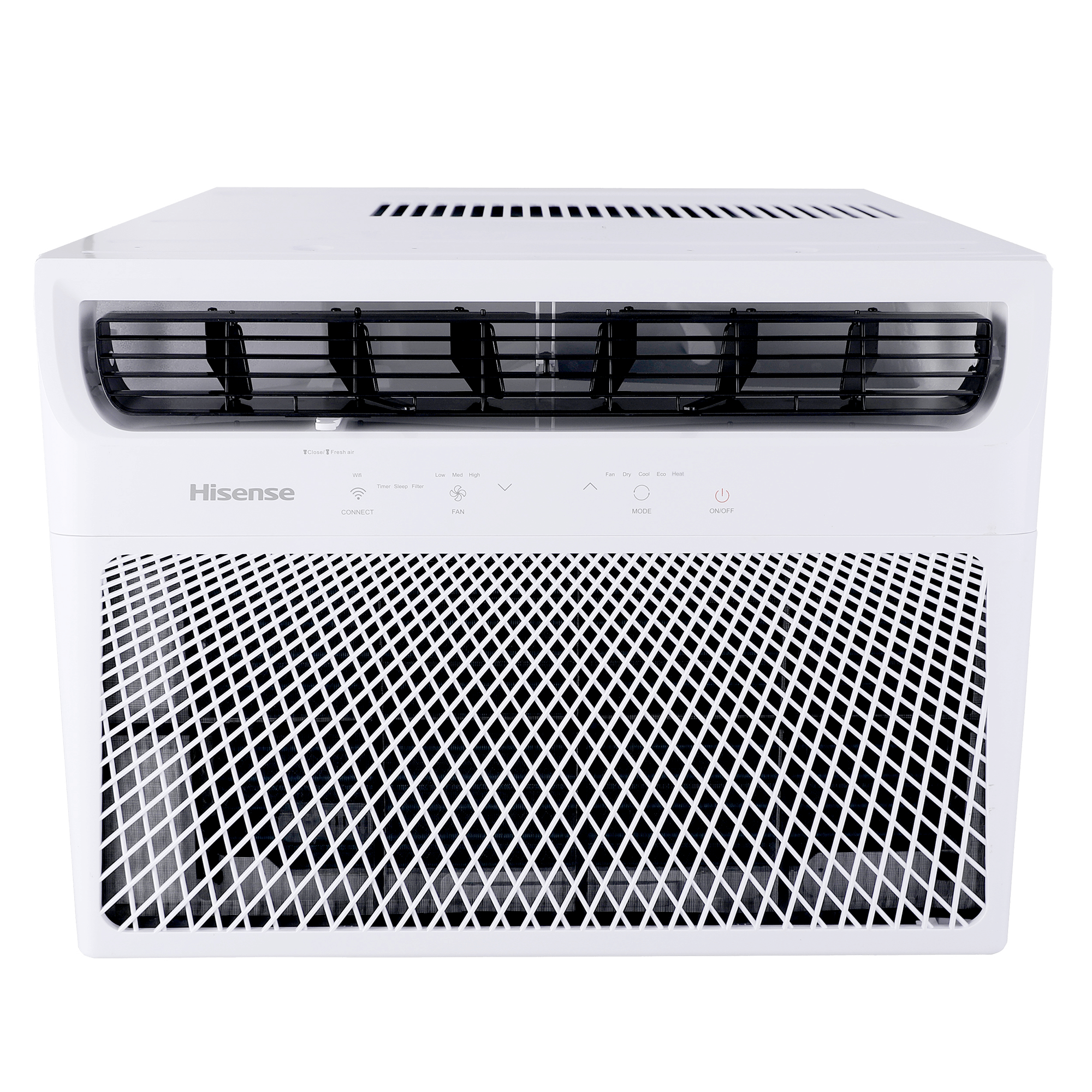
Credit: www.hisense-usa.com
Conclusion
Troubleshooting a Hisense window air conditioner doesn’t have to be stressful. Follow basic steps like checking the power, filter, and settings. Regular maintenance helps avoid common issues and keeps it running smoothly. If problems persist, consult the manual or contact customer support.
A little effort can go a long way in restoring comfort to your space. Always prioritize safety while handling any repairs or inspections. With proper care, your air conditioner can provide reliable cooling for years. Stay proactive and address issues early to ensure optimal performance.

